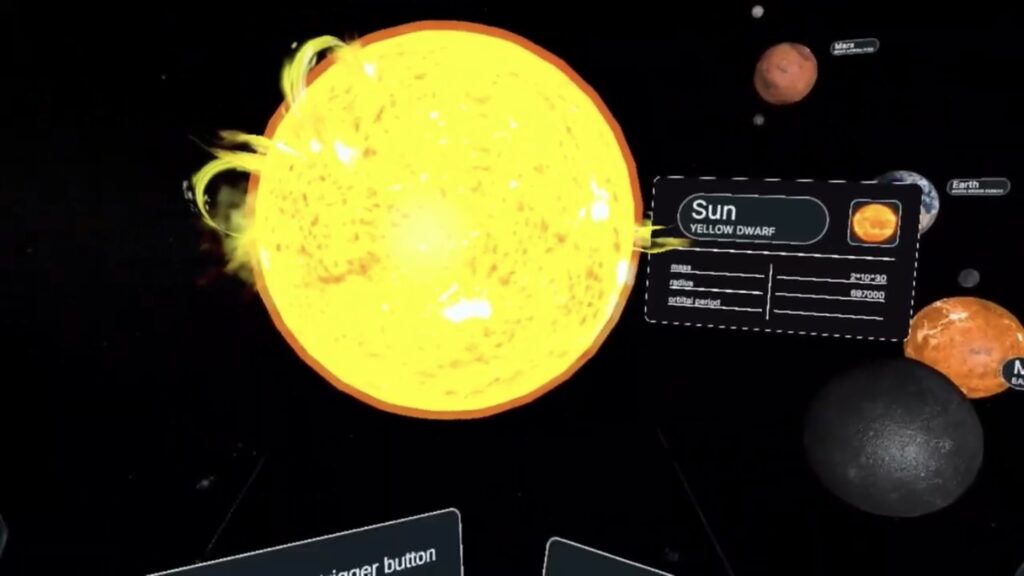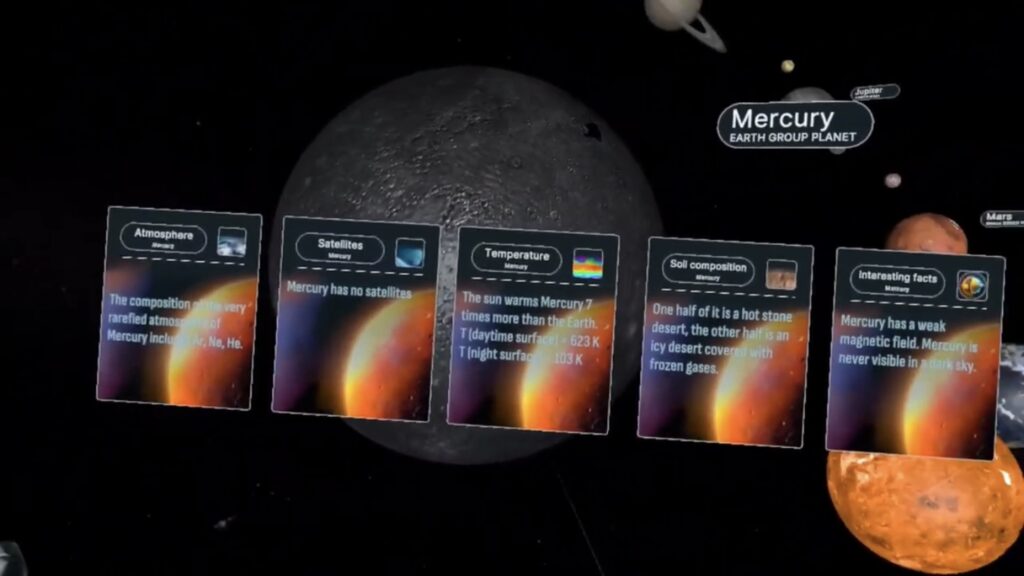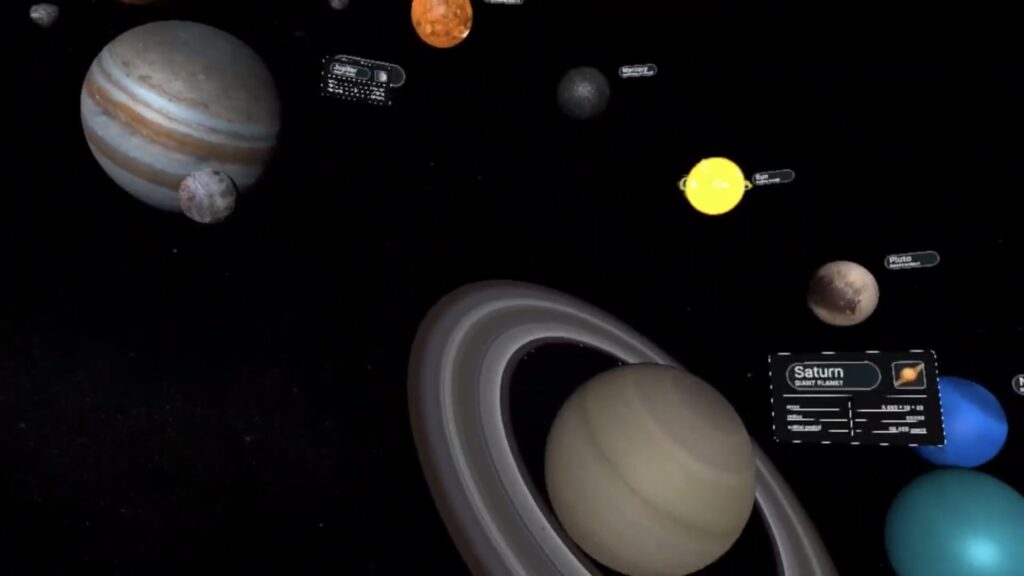

Turning orbital mechanics from a sleepy chapter in the textbook into a full-body adventure.
Ask most teens to list facts about Saturn and you get dutiful answers—radius, rings, rotation period—followed by glazed eyes. Numbers alone rarely spark wonder. Physics teachers know the struggle: cosmic distances feel abstract, lab budgets rarely stretch to planetarium trips, and looming exams push lessons back to rote memorisation.

Mission-Based Storyline
Learners play cadets in an international space-agency programme. Before each launch they configure a suit—insulation, radiation shielding, oxygen mix—using data hidden in briefing files. A mismatch means suit alarms blare, forcing an on-the-fly recalculation. Orbital periods, atmospheric pressure, and thermal conductivity stop being test vocab and start being urgent survival tools.

| Headset | Standalone or PC-Tethered | Ideal Use-Case |
|---|---|---|
| Meta Quest 2 / 3 / Pro | Standalone | Quick setup in mixed-ability classes |
| Pico 4 | Standalone | Budget-conscious schools needing bulk sets |
| HTC Vive Focus 3 | Standalone | High-end visuals for advanced labs |
| Valve Index / Vive Pro 2 | PC-tethered | Ultra-high fidelity for media labs |
Set-Up Time: 5 minutes per headset.
Floor Space: 2 × 2 m per learner for room-scale; seated mode available.
Health & Safety: Built-in guardian boundary, age-appropriate comfort settings.

Orientation Day – Students explore a scaled Sun-planet model to grasp astronomical units visually.
Suit-Design Challenge – Small groups research atmospheric data and build optimal gear for three target planets.
Mission Week – Daily 25-minute VR sessions: land, collect data, return. Teachers pull analytics for debrief.
Lab Extension – Use collected values (gravity, temp) to run real-world experiments: e.g., pendulum swing vs. gravitational acceleration.
Capstone Expo – Teams present findings to parents or community partners, using headset replays to illustrate discoveries.
Tap Regional STEM Hubs – Many states run grant pools explicitly for immersive tech.
Leverage University Outreach – Early-career researchers often need education components for grants; your class can fill the requirement.
Parent Micro-Donations – A single £1 000 gift equipped Nikki’s robotics team; similar sums can cover a shared charging cart or annual content licence.
Corporate CSR Programmes – Energy or aerospace firms love branding space-themed school events; pitch a “Name Our Student Rover” contest for sponsorship.
Is VR safe for extended use?
Yes—headsets include IPD adjustment, blue-light filters, and guardian boundaries. Limit individual sessions to 25 minutes and build screen breaks into lesson plans.
How often is content updated?
Major patches arrive each summer, adding new missions or planetary data sets to sync with NASA discoveries. Teachers receive patch notes via email plus automatic headset pushes.
Do I need fast Wi-Fi?
Initial downloads require stable broadband; once installed, simulations run offline, perfect for rural schools.
XReady Lab offers a trial bundle packed with biology and physics minis—ideal for testing headset management in your VR classroom. While the Solar-System module sits outside the sampler, the demo shows exactly how the interface works.
👉 Reserve Your Demo Set: xreadylab.com/request-demo-page
By merging rigorous orbital physics with choose-your-own-adventure gameplay, XReady Lab’s Solar-System simulation redefines what a modern STEM lab can be. Students no longer recite planetary data—they experience it, linking theory to tangible, memory-making missions. Teachers shed the weight of expensive field trips and unwieldy apparatus, focusing instead on coaching curiosity and critical thinking.
The cosmos is vast; class periods are short. Strap on a headset and watch those worlds collide—in the best possible way.
Frequently Asked
We prodive VR biology, VR physics, and VR chemistry simulations. Please, check our catalog.
Please, fill the form to get demo labs for free.
Please contact our customer support service at support@xreadylab.com or book a call with the team to find out the conditions and book the VR class set up at your school.
Subscription to XReady Lab interactive VR labs. If you are a school, then you are also given access to the VR classroom system. VR class system helps you easily launch VR lessons for a large number of students, follow the experience of each student, as well as customise the content without developers.
We adhere to the world’s generally accepted recommendations and research. Our products are suitable for children from 12 years old.